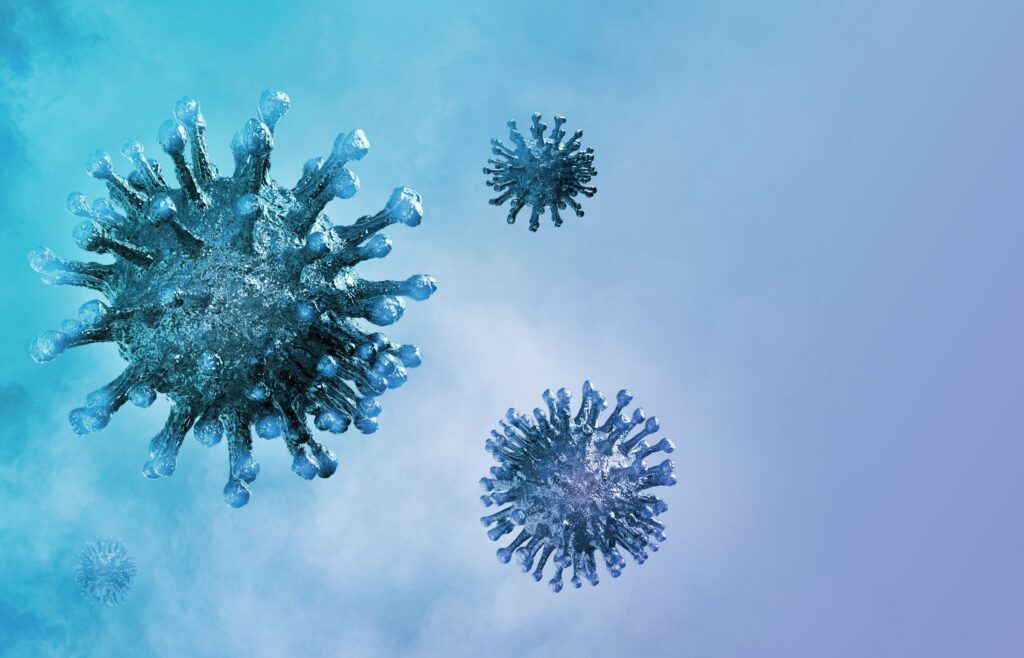What is a Respiratory Infection?
Respiratory infections affect the respiratory system, including the nose, sinuses, throat, airways, and lungs. They can be caused by viruses, bacteria, and fungi, but tend to present similar symptoms, such as a cough, congestion or runny nose, and fatigue. Because the symptoms are so similar among different types of infection, the illness can be difficult to diagnose or identify.
While most respiratory illnesses go away on their own, some require medical intervention. In this article, you’ll learn about viral, fungal, and bacterial respiratory infections, their similarities, differences, and current treatment options.
About the Respiratory System
Your respiratory system includes two main areas known as the upper and lower respiratory tracts. The upper respiratory tract is the nose, sinuses, and throat. The lower respiratory tract includes the airways and lungs.
Upper Respiratory Infection Symptoms
While each infection can cause slight variations in symptoms, upper respiratory infections most often cause a cough. They may also lead to a stuffy or runny nose, sore throat, sneezing, achy muscles, and headache. The most common types of upper respiratory infections are the common cold (sometimes known as a head cold), sinus infections, tonsillitis, and laryngitis.
Lower Respiratory Infection Symptoms
Lower respiratory infections tend to be more severe, often causing a cough that produces mucus, known as phlegm. Lower respiratory infections are illnesses that infect the lungs and airways. Bacterial and viral infections can occur in the lower respiratory tract, like pneumonia, pertussis (whooping cough), influenza, tuberculosis, COVID-19, and respiratory syncytial virus (RSV).
Common Respiratory Infections and Their Symptoms
Since respiratory illnesses affect the same bodily systems and areas, their symptoms tend to be similar. That can make it difficult to know if you have a cold or the flu… or COVID-19, or RSV, and so on.
This section outlines each illness and its symptoms, as well as some treatment options.
Influenza Symptoms
A type of respiratory illness caused by one of the four main influenza virus strains (A, B, C, and D), the flu tends to cause the following symptoms:
- Cough
- Sore throat
- Runny or stuffy nose
- Muscle or body aches
- Headaches
- Fatigue (tiredness)
- Fever or chills (though not everyone who has the flu gets a fever)
- Vomiting and/or diarrhea (more common in children than adults)
As a viral infection, influenza is an illness that cannot be treated with antibiotics. Generally, healthy individuals should fight off a flu infection with plenty of rest, fluids, and time. Those with underlying health issues and people over 60 may need additional care from health care professionals. Over-the-counter medications can help alleviate some symptoms. Additionally, research shows that flu vaccines can help prevent severe infections in breakthrough cases, while providing protection from certain strains helping slow the spread of the virus to others.
To best avoid catching the flu, employing precautions like those implemented during the COVID-19 pandemic is recommended. Wearing a mask during flu season, getting vaccinated, washing hands often, and practicing social distancing are great methods to help prevent the spread of influenza.
Coronavirus (COVID-19) Symptoms
Gaining worldwide notoriety in late 2019 and early 2020, SARS-CoV-2 is best known as the cause of the COVID-19 pandemic. However, other strains of coronavirus have caused smaller epidemics in recent years. Severe acute respiratory syndrome (SARS) was a coronavirus outbreak that started in Asia in 2003 and spread to over 20 other countries before it was contained. Middle East respiratory syndrome (MERS) was first reported in Saudi Arabia in 2012 and traveled across the globe in the years after and reached the U.S. in 2014 before it was contained.
In each of those cases, infections were severe and highly contagious, creating a need for monitoring by governmental bodies and experts. In other lesser-known cases, coronaviruses can produce mild common colds.
Each coronavirus strain and each of its variants produces different symptoms, so generalizing those symptoms can be difficult. The most common symptoms of COVID-19 are:
- Fever or chills
- Cough
- Shortness of breath or difficulty breathing
- Fatigue
- Muscle or body aches
- Headache
- New loss of taste or smell
- Sore throat
- Congestion or runny nose
- Nausea or vomiting
- Diarrhea
Like influenza, coronaviruses are viral infections and cannot be treated with antibiotics. In mild to moderate cases, getting rest and drinking fluids while treating the symptoms will allow your body to fight the virus over time. However, if breathing becomes difficult, seeking treatment from a health care professional is recommended. To help avoid contracting COVID-19, staying current on vaccines for the virus is encouraged. Research suggests that in addition to preventing COVID-19 infection and re-infection, the approved vaccines can also help prevent severe infection.
RSV Symptoms
Respiratory syncytial virus (RSV) is a viral infection of the lungs and airways. Almost 90% of children are infected with RSV before they turn two years old. For most people, RSV causes upper respiratory infection and mild, cold-like symptoms (e.g., congestion, low-grade fever). However, RSV can cause severe, life-threatening lower respiratory infections, such as pneumonia or bronchiolitis, and is particularly dangerous for seniors, infants, and people with weakened immune systems. Common RSV symptoms include:
- Runny nose
- Decrease in appetite
- Coughing
- Sneezing
- Fever
- Wheezing
The immune system will most likely be able to fight RSV off with plenty of rest and fluids. However, in the case of a severe infection, there is an approved medication available for doctors to administer. RSV spreads like many other viral infections — through airborne droplets that are inhaled from an infected person. Frequent handwashing, maintaining social distancing, wearing masks, and, for those eligible, getting vaccinated against the illness can all help prevent the spread of RSV.
Whooping Cough (Pertussis) Symptoms
Pertussis, better known as whooping cough, is caused by bacteria and is highly contagious. It spreads similarly to the viruses mentioned previously, usually by being near an infected person coughing frequently. Early symptoms of pertussis generally last one to two weeks and include:
- Runny nose
- Low-grade fever (usually minimal throughout the course of the disease)
- Mild, occasional cough
- Apnea — a pause in breathing (in babies)
After the first two weeks of the infection, symptoms may progress and worsen. At this point, antibiotics do little to treat the illness. These symptoms include:
- Paroxysms (fits) of many, rapid coughs followed by a high-pitched “whoop” sound
- Vomiting (throwing up) during or after coughing fits
- Exhaustion (very tired) after coughing fits
Since it is caused by bacteria, antibiotics are generally used to assist in fighting the illness. It is important to see a healthcare provider when symptoms appear — they may be able to test for the illness and prescribe antibiotics to prevent severe illness from developing. In infants especially, whooping cough can be dangerous — about half of all babies under a year old require hospitalization to treat the illness.
The pertussis vaccine is the best method of preventing infection, protecting against severe illness in breakthrough cases, and helping prevent the spread of the disease to others, especially babies. If you suspect a whooping cough infection, seek medical attention.
Chronic Obstructive Pulmonary Disease (COPD)
Chronic obstructive pulmonary disease (COPD) is a group of diseases that cause breathing problems and blocked airway. COPD can cause increase the risk of severe respiratory infection. Over 16 million Americans suffer from COPD and millions more are estimated to suffer from undiagnosed COPD. There is no cure for COPD, but there are some approved treatment options. Common symptoms of COPD include:
- Frequent coughing or wheezing
- Excess phlegm, mucus, or sputum production
- Shortness of breath
- Trouble taking a deep breath
Tobacco products are the main culprits of COPD, followed closely by air pollutants. Treatment of COPD is possible, and early intervention improves outcomes. Quitting smoking and reducing secondhand smoke inhalation is the most helpful step to take, along with seeking treatment from a healthcare provider. In addition to medication, pulmonary rehabilitation may be a way to improve quality of life for COPD sufferers. Finally, staying current on all respiratory illness vaccines, like influenza, pertussis, and COVID-19, can help protect those with COPD from developing severe illnesses.
Pneumonia Symptoms
Pneumonia is an infection of the lungs and can be caused by numerous pathogens — fungal, bacterial, and viral. COVID-19, influenza, and RSV are some of the main viral infections that can lead to pneumonia, as well as a bacterium called Streptococcus pneumoniae (pneumococcus). Pneumonia can occur in people of all ages and cause a range of mild to severe illness, and even death. Signs and symptoms of pneumonia may include:
- Chest pain when you breathe or cough
- Confusion or changes in mental awareness (in adults aged 65 and older)
- Cough, which may produce phlegm
- Fatigue
- Fever, sweating and shaking chills
- Lower than normal body temperature (in adults older than age 65 and people with weak immune systems)
- Nausea, vomiting or diarrhea
- Shortness of breath
For milder cases of pneumonia, the immune system should be able to fight the infection, especially with plenty of fluids and rest. If the infection is more severe, healthcare providers will generally get blood tests to determine the type of pneumonia to better treat it.
For bacterial pneumonia, antibiotics may be prescribed. For viral pneumonia, cough suppressants and fever reducers might be used. In severe cases, hospitalization and/or ventilators may be used, especially in people over 65, younger than two months, or those experiencing any of the following:
- Confusion about time, people, or places
- Declining kidney function
- Systolic blood pressure below 90 millimeters of mercury (mm hg) or diastolic blood pressure 60 mm hg or below
- Rapid breathing (30 breaths or more a minute)
- Difficulty breathing
- Low body temperature
- Heart rate below 50 or above 100
There are pneumococcal vaccines to help prevent bacterial pneumonia, as well as vaccines to help prevent other respiratory illnesses that lead to pneumonia.
Distinguishing Respiratory Infections
To best distinguish which respiratory infection you may have, talk with your healthcare provider. A combination of blood, nasal swab, and breathing tests can figure out if you have COVID-19, influenza, whooping cough, RSV, pneumonia, or COPD. Diagnosing the illness is important for potentially treating the infection and slowing the spread to others.
Respiratory Infection Clinical Research
There are dozens of ongoing clinical trials to study new potential preventions, tests, and treatments for infectious diseases. The studies range from investigational vaccines to prevent infection, to nasal swab tests to diagnose the illness, to investigational medications intended to prevent severe illness. These respiratory infection research studies provide hope that better treatments and preventions will be available in the future.
Velocity is currently conducting clinical trials for investigational vaccines, tests, and medications intended to fight some of these infectious diseases, including RSV, the flu, and COVID-19. The goal of these clinical trials is to study the safety and efficacy of these investigational products. In addition to advancing science, clinical trial participants may receive study-related exams at no cost and compensation for study-related time.
Clinical Trials at Velocity
If you’re interested in learning more about or participating in a clinical trial with Velocity, visit our find a study page to speak with a recruitment specialist.
Further Reading
Respiratory Infections:
National Health Service, Respiratory Tract Infections (RTIs)
On Health, Respiratory Illnesses: 13 Types of Lung Infections
ENT of New Orleans, 7 Signs of a Respiratory Infection
The Lung Docs, Respiratory Infections
Advanced Urgent Care, Upper Respiratory Infection
Coronavirus:
Centers for Disease Control and Prevention, COVID-19
Centers for Disease Control and Prevention, MERS
Centers for Disease Control and Prevention, SARS
WebMD, History of Coronavirus
Influenza:
Centers for Disease Control and Prevention, Influenza
Pertussis:
Centers for Disease Control and Prevention, Pertussis
COPD:
Centers for Disease Control and Prevention, COPD
RSV:
Centers for Disease Control and Prevention, RSV
Pneumonia:
Centers for Disease Control and Prevention, Pneumonia
The Mayo Clinic, Pneumonia

